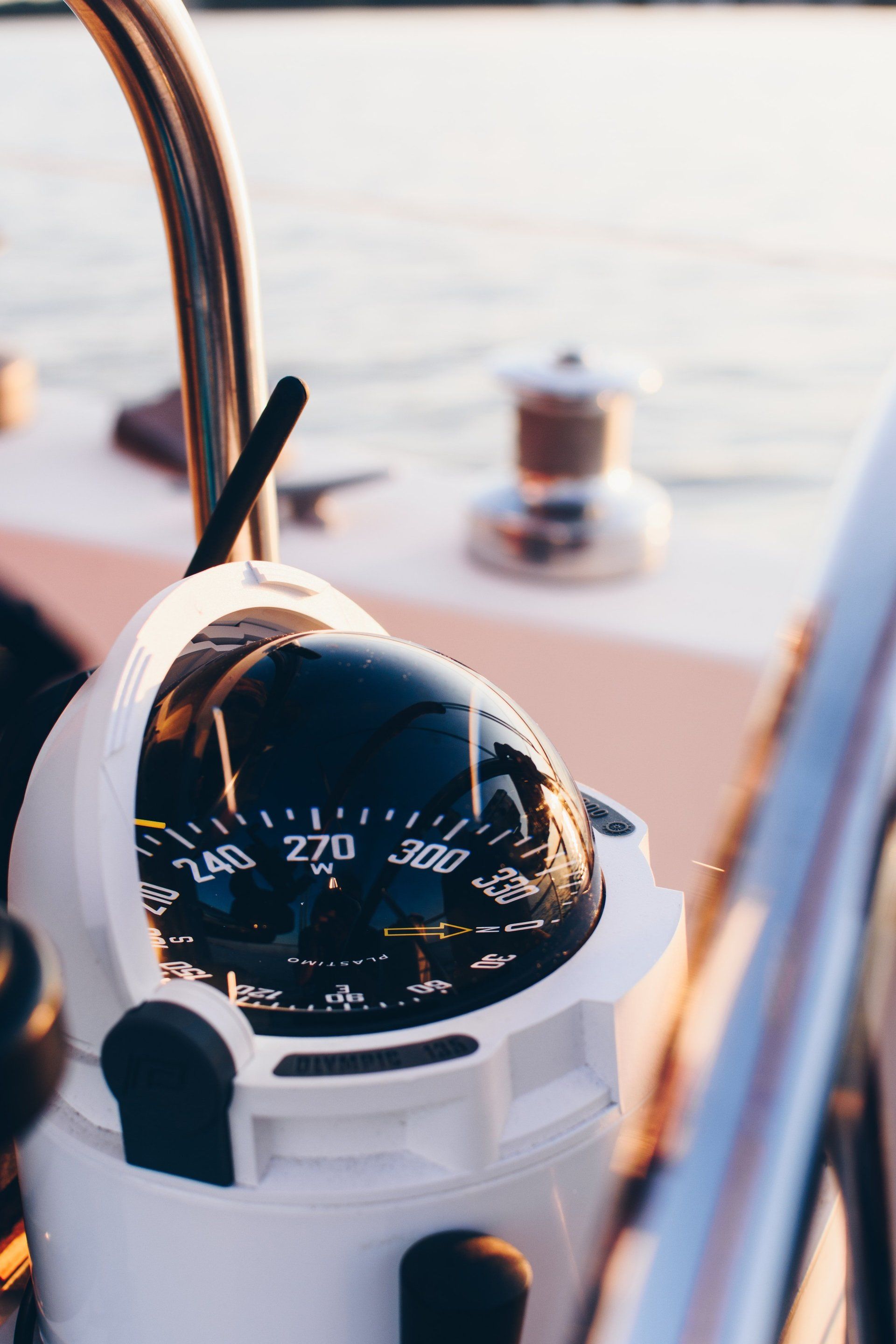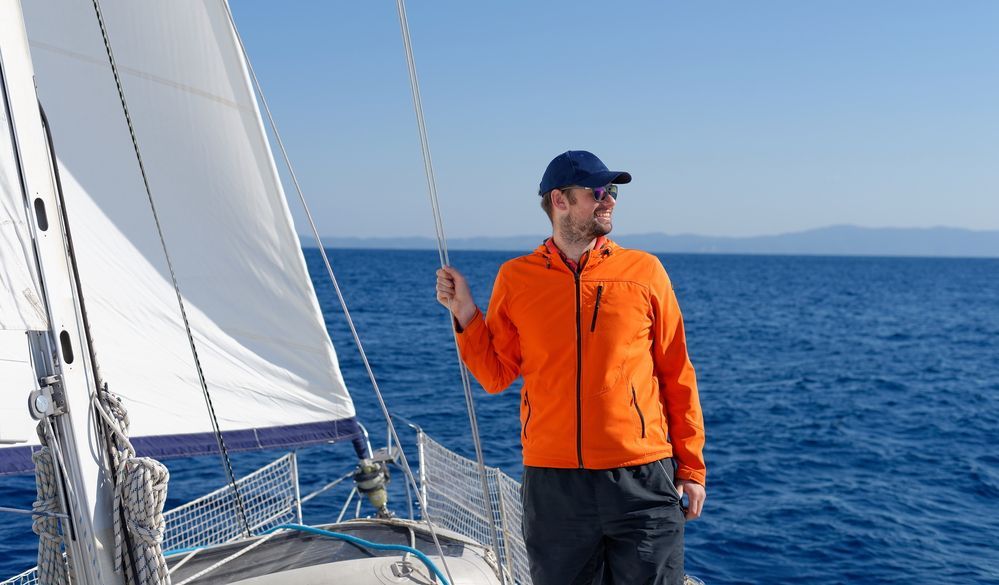DIY Learn To Sail vs. Sailing Lessons

There’s nothing quite like sailing — that unique combination of exhilaration, relaxation, and inspiration that only comes as you glide through the water, pushed along by a fresh breeze with the sound of the waves keeping you company.
Whether you’re a novice sailor who’s itching to get out there on the water or you used to sail as a teen or in college and you’d like to get back into it, there’s probably one looming question on your mind: Should I take sailing lessons from a professional instructor, or go the DIY sailing route?
Good question. Consider that all you have to learn is:
- an entire new vocabulary
- how to make the boat go exactly where you want it to
- how to read and use the wind
- how to launch your boat
- how to trim the sails correctly
- the basics of navigation
- the different parts of the boat
- how to tie and use knots correctly
- sailing etiquette
- how to sail in different types of weather conditions
- how to dock your boat
- what to do when something goes wrong
- …and much more
(Feeling overwhelmed yet?)
If you were fortunate to be raised on the water, sailing skills and language probably feel like second nature, and DIY sailing may be a good choice. But for the rest of us, professional sailing lessons are a must.
“But how hard could it be to teach yourself sailing?” you may be asking.
While sailing isn’t difficult to learn, it’s both a science and an art form that encompasses many moving parts — and to succeed at sailing, sailors need training, instruction, and practice, just as with any other sport or activity.
Here’s why sailing lessons are essential.
Why Sailing Lessons?
Not too long ago, if someone wanted to learn to sail, they had limited options: Find someone who knew what they were doing and tag along, trying to absorb their knowledge along the way, or teach themselves through trial and error (and given all that can go wrong out on the water, this second option isn’t ideal).
Fortunately, today’s prospective sailors have much better options.
ASA certified instruction courses not only provide the skills and knowledge that sailors need, sailing lessons also offer a measure of confidence that’s key when you’re out there on the water.
In a learning environment that changes by the minute and that itself requires some skill and experience (think the windy Caribbean Sea), trying to DIY the learning process can lead to feelings of panic and anxiety out of the picture.
In comparison, lessons from a certified instructor take the stress out of the picture, turning every circumstance that arises into an ideal opportunity to learn maneuvers, gain skills and build the knowledge and experience necessary to sail on your own.
It’s the difference between calm, expert instruction that helps you build skills, and winging it in a new environment where you simply hope for the best.
That’s a significant difference.
After professional lessons, you’ll understand the rules of the road and gain experience that helps avoid costly damage to boat parts.
Even more importantly, professional sailing instruction prepares you to be safe on the water. You’ll learn about safety measures and precautions to take, so as to avoid injuries other potential dangers.
While lessons may cost more than the DIY sailing approach, in the long run, they’re more than worth it as an investment in safety and peace of mind.
Let’s take a deeper look at the skills and knowledge you need to know to stay safe — and have an enjoyable, low-stress experience — when you’re out on the water.
Imagine you’re out on the water, and the captain yells, “Ready to gybe!”
Do you know what to do? (Hint: If you don’t duck, you might get bumped in the head by the boom as it swings over!)
What if you’re instructed to “haul in the jib sheet”? Would you know which line to pull? (Or should you grab a halyard?)
When you’re learning the lingo of sailing, it’s almost like learning a whole new language.
While you don’t need to know every term or phrase simply to enjoy a day on the water, some basic vocabulary is essential, such as:
- the parts of the ship (for example, the boom, the rudder, the mast, the keel, the cleats, the lines, the helm, the tiller and the different types of sails such as mainsail and jib, just to start)
- directional terms (boat related, such as aft, bow, port and starboard, and wind-related, such as leeward, windward, port tack, starboard tack, point of sail)
- maneuvering terms (such as tacking, jibing, heeling)
These terms may be just a start, but they represent the basic vocabulary you need to start confidently making your way around a boat and respond to the captain’s commands.
While it’s not difficult to look up terms a sailing glossary, rote memorization can’t replace the hands-on knowledge that comes from using these terms and associating them with real-life actions.
That’s the type of knowledge you miss out on when you teach yourself sailing.
Rigging the Boat
The mainsail. The jib. Sometimes, the spinnaker.
Your sails harness the power of the wind, driving your boat forward and allowing you to make it go where you want it to go.
But in order to get there, you have to rig your boat.
This is definitely a task that requires instruction, at least the first few times you attempt it.
Sailing lessons will demystify the rigging process, giving you practice and hands-on experience you need to correctly rig the boat, as well as troubleshoot and make needed changes when you’re out on the water.
Sailing Theory
Now that the boat is rigged and ready to go, the next step is… making it go. That requires sailing theory.
And sailing theory is where sailing lessons really come in handy.
First, you’ve got to figure out how the wind works in relation to your boat’s position. Lessons will make it easier to understand the points of sail, or the position of the boat relative to wind direction.
Understanding how points of sail works is key to the way you’ll set your sails and, often, how to position your body’s weight and that of other crew on board.
Oh, and sailing theory has some more basic vocabulary that you’ll want to learn as well. Are you on a beam reach, or are you close hauled? Are you running or on a broad reach?
Learning the different ways that the boat responds to wind direction (and how the boat creates its own wind, adding another layer of complication!) is key to figuring out how to set the sails and make the boat go where you want it to.
Professional sailing instruction simplifies this learning process, making it easier for you to get a handle on sailing theory.
Tacking. Jibing. Running. Reaching.
The sails are up and you’re on the move. Now, how do you get the boat to go the way you want it to?
It’s all about pointing your boat at different angles to the wind and setting your sails correctly, and that all has to do with the points of sail.
If it sounds complicated, it can be. Fortunately, sailing lessons bring all the moving parts together into one comprehensive picture.
Lessons will teach you how to trim the jib and mainsail, make turns, use the tiller and position your body’s weight correctly so you can maneuver.
It takes practice, but with experience, boat handling will become second nature.
Sailboat Safety
Most importantly, sailing lessons will help keep you safe.
You’ll learn the rules of the road, keeping in mind that sailboats and powerboats have different right-of-way rules.
You’ll learn what to do if a passenger goes overboard and practice crew overboard maneuvers.
You’ll learn how to react if you’re faced with rough weather and strong winds.
While teaching yourself sailing may save a few bucks up front, in the long run, professional sailing instruction represents an investment in your safety and will reduce the likelihood of boat damage.
The combination of ASA-certified sailing lessons , hands-on practice, and expert instruction simply can’t be beaten.



